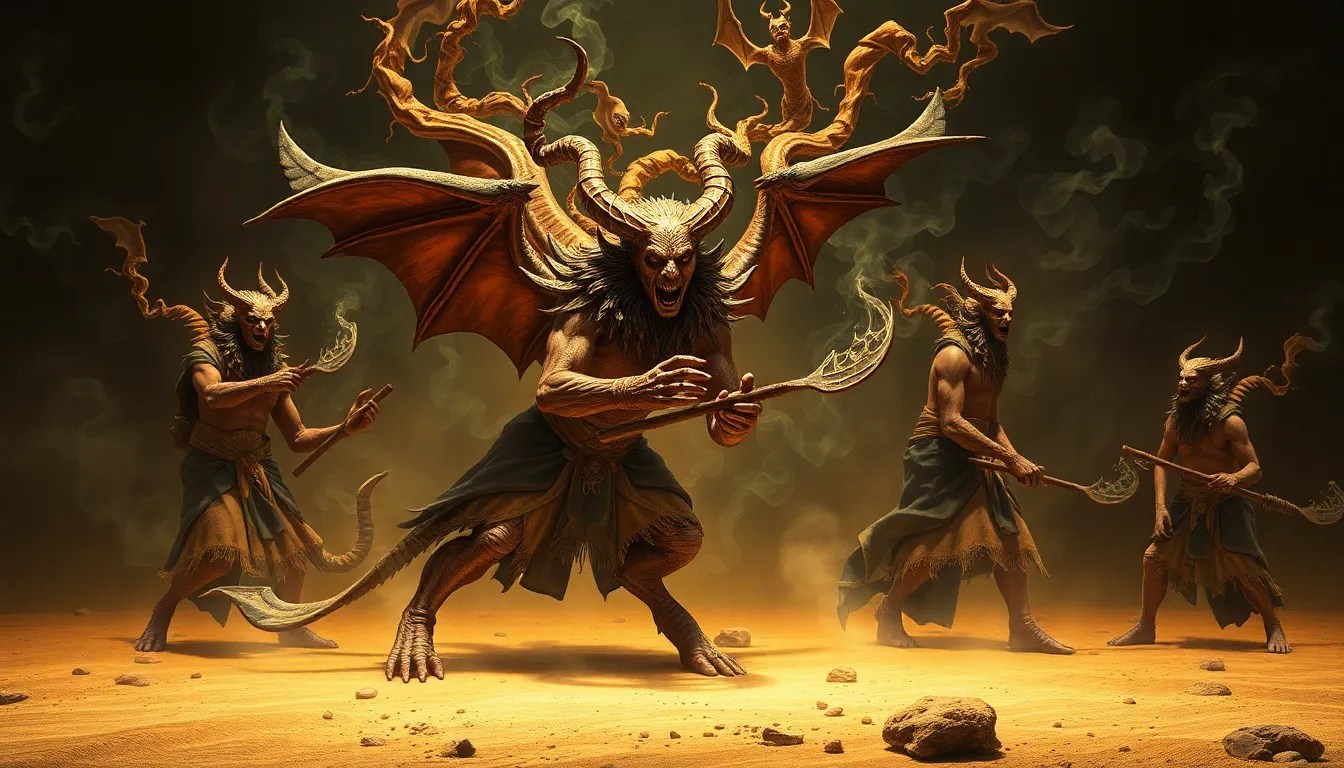The Role of Demons in Babylonian Healing Practices
I. Introduction to Babylonian Healing Practices
Ancient Babylonian medicine was a complex system that intertwined physical treatment with spiritual beliefs. The Babylonians viewed health as a balance of both the body and the spirit, where ailments could stem not just from physical causes, but from supernatural influences as well. This belief system led to a unique integration of spirituality and healing, where various rituals and practices were performed to invoke divine favor and ward off malevolent forces.
Demons played a crucial role in this healing process. Rather than being seen solely as malevolent entities, many demons were believed to hold the power to both cause and cure illnesses. Understanding the dual nature of these beings was essential for practitioners of Babylonian medicine, as they navigated the complex landscape of health and illness.
II. Understanding Babylonian Demons
In Babylonian mythology, demons are defined as supernatural beings that can have both beneficial and harmful effects on humans. They are classified into various categories based on their attributes and roles. Some demons were seen as protectors, while others were viewed as adversaries that brought about suffering.
- Protective Demons: These entities were invoked to safeguard individuals from illness and misfortune.
- Malevolent Demons: These spirits were believed to inflict suffering and were often the focus of exorcism rituals.
Major demons associated with health and illness include Pazuzu, the demon of the southwest wind, and Lamashtu, a demoness feared for her association with childbirth and infant mortality. The dual nature of demons in Babylonian culture highlights their complex role within the healing practices of the time.
III. The Concept of Illness in Babylonian Culture
The Babylonians perceived illness as a manifestation of both spiritual and physical ailments. This duality was deeply ingrained in their understanding of health, where physical symptoms could often be traced back to divine displeasure or supernatural interference.
- Spiritual Ailments: Illnesses believed to be caused by the wrath of gods or demons.
- Physical Ailments: Conditions that could be treated with herbal remedies and medical knowledge.
Demons were often blamed for causing illness, serving as intermediaries between the afflicted and the divine. The belief in divine retribution played a significant role in how the Babylonians understood health, with many viewing sickness as a punishment for moral or spiritual transgressions.
IV. Healing Practices Involving Demons
Healing practices in Babylon were rich with rituals and incantations designed to invoke the favor of benevolent demons and expel malevolent ones. These practices were often complex and varied, reflecting the diverse beliefs within Babylonian society.
- Rituals and Incantations: Healers would recite specific prayers and chants to summon protective spirits or to drive away harmful entities. These rituals were often performed in sacred spaces, enhancing their efficacy.
- Amulets and Talismans: Objects inscribed with protective symbols or prayers were worn by individuals to guard against malevolent spirits and illness.
- Role of Priests and Healers: Specialized practitioners, such as priests and healers, acted as mediators between patients and demons, facilitating communication with the spiritual realm.
V. Case Studies: Specific Demonic Entities in Healing
Several demons in Babylonian mythology are particularly notable for their associations with healing and health-related practices:
A. Pazuzu
Pazuzu, often depicted as a fierce demon associated with the southwest wind, was invoked for protection against evil spirits and disease. His image was used in amulets, as he was believed to ward off Lamashtu and other malevolent entities.
B. Lamashtu
Lamashtu was a demoness feared for her role in causing complications during childbirth and infant mortality. To combat her influence, rituals were performed to protect mothers and infants, highlighting the cultural significance of these practices.
C. Other Notable Demons
- Gula: The goddess of healing, often invoked in conjunction with other demons to promote health.
- Asag: A demon associated with disease, whose defeat by the god Ninurta symbolized the victory of health over illness.
VI. The Role of Exorcism in Babylonian Medicine
Exorcism was a vital aspect of Babylonian healing, aimed at expelling evil spirits believed to cause illness. The process involved various techniques and rituals designed to cleanse the afflicted individual.
- Exorcism Process: Typically involved the recitation of incantations, the use of sacred objects, and sometimes the sacrifice of offerings to appease the spirits.
- Techniques: Practitioners employed a range of methods, including fumigation, anointing with oils, and the recitation of specific texts believed to hold power.
Community involvement was also significant in these rituals, as collective belief in the power of the exorcism reinforced its effectiveness and provided social support for the afflicted.
VII. Comparative Analysis with Other Ancient Cultures
Babylonian healing practices exhibit both similarities and differences when compared to those of other ancient cultures, such as the Egyptians and Sumerians.
- Similarities: Like the Babylonians, both Egyptians and Sumerians integrated spiritual beliefs into their medical practices, often invoking divine intervention.
- Differences: While Babylonian demons were often viewed as dual entities, other cultures may have classified them more strictly as either good or evil.
- Influence: Babylonian practices influenced neighboring cultures, contributing to a shared understanding of the supernatural’s role in health and illness.
VIII. Conclusion
The role of demons in Babylonian healing practices reveals a rich tapestry of beliefs where the spiritual and physical realms intersected. These practices not only illustrate the ancient understanding of medicine but also highlight the cultural significance of mythology in everyday life. The legacy of these beliefs continues to resonate in modern interpretations of healing, reminding us of the intricate connections between mythology, medicine, and culture.
As we reflect on these ancient practices, it becomes clear that the Babylonian perspective on health was both profound and complex, offering valuable insights into the human experience and our ongoing quest for understanding and healing.



